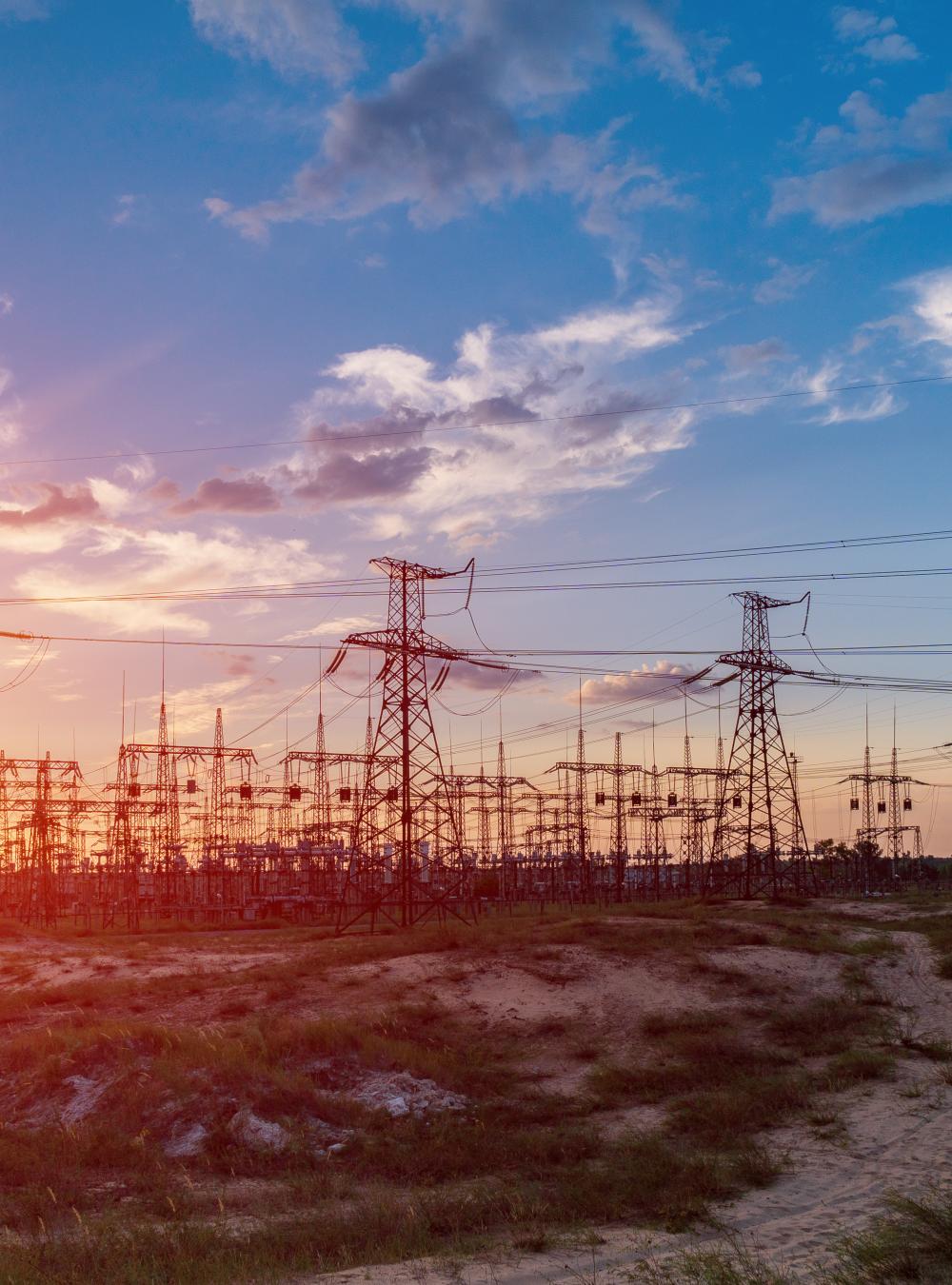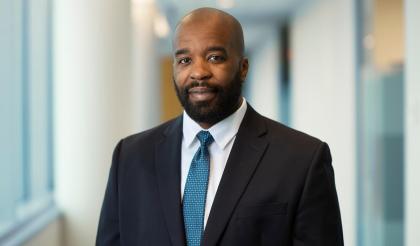Cyber attacks on the nation's power grid could cause as much damage as a major natural disaster. That's why we're using our expertise in cybersecurity to help utilities and other organizations address risks and build resilience in the energy sector.

Amping Up Cyber Defenses for Critical Energy Systems
When you think about threats to our power grid, you may think of peak energy demand in cities causing brownouts or natural disasters disabling the power supply.
But what about cybersecurity threats to the basic infrastructure? The nuts and bolts of the energy grid are vulnerable, too. That's something MITRE's Otis Alexander thinks about all the time.
And that's why he's become a driving force in identifying critical cybersecurity needs in the energy sector. His work fortifying the cybersecurity of the industrial control systems (ICS) that run the world's most critical infrastructures is fundamental to ensuring a resilient energy system.
Since joining MITRE in 2014, Alexander has become a sought-after expert in ICS and operational technology security. And through his work and research, he's helping to bring cybersecurity resilience to our nation's energy infrastructure.
MITRE Cyber Experts Emily Frye and Otis Alexander
Emily Frye: There are three main challenges to the nation's energy infrastructure today, and the first is that when we think about industrial control systems, they're not equipped to defend themselves or to sense their own position with regard to cybersecurity. The second main challenge is that the private sector owns and controls the vast majority of the energy infrastructure and yet the energy infrastructure is essential to national security. The third issue is that there is a legacy cultural divide between traditional IT networks and cyber professionals and the industrial control systems networks and professionals.
Otis Alexander: Well building on MITRE's a core cybersecurity expertise to think about risk in the energy sector, we built the industrial control system threat model and it's based on MITRE ATT&CK. ATT&CK is a MITRE-developed, globally accessible knowledge base of adversary tactics and techniques and it's based on real-world observations. We work with the Electric Power Research Institute as well as other utility partners and we work in their test beds and we also conduct tabletop exercises with them. And the main point of that is to understand how cyber induced failures impact their industrial control systems.
Frye: So MITRE has begun this work in industrial control systems by looking at power, energy. But if you look across other critical infrastructures: water, transportation even—which we might not suspect but it's true—and healthcare and manufacturing. All of these sectors, which are lifeline sectors for our economy and our nation, rely on industrial control systems.
The ICS Threat Model Helps Recognize Risks
"The problem is that the ICS—like those used in electric power substations—currently lack the capability for active defense of their systems from cyber adversaries," Alexander says. "To build those defenses, it's critical we understand potential and past cyber adversary behavior."
Plus, you need to do more than recognize a cyber attack when it happens. It's also about maintaining critical functions—cyber resiliency—after your systems have been infiltrated. That's a key reason why his research builds on MITRE's core cybersecurity expertise to address risks in the energy arena.
"I'm passionate about advancing cybersecurity in the energy sector, so I championed the development of an ICS threat model," he says.
The ICS threat model builds on ATT&CK™—a MITRE developed, globally accessible knowledge base of cyber adversary tactics and techniques based on real-world observations.
Industry-Wide Collaboration Leads to Protection
Part of his mission involves disseminating cyber adversary behavior about the energy sector. It's having a ripple effect.
"We've shared that ICS threat model with the energy industry," Alexander says "It's helping drive security monitoring and analytics in the ICS domain. That's leading to better detection of cyber attacks and better response to those attacks."
In his research, he's partnered with the Electric Power Research Institute, the Gas Technology Institute, the Pacific Northwest National Laboratory, and other utility partners on projects. "We're demonstrating the impacts of cyber-induced failures on critical ICS infrastructure," he says.
Alexander knows that cybersecurity and resilience to cyber attacks in the energy domain rank among the nation's most important security challenges.
"Cyber attacks on power stations, oil refineries, and other elements of the world's energy infrastructure have the potential to cripple the affected community. The effects of an attack on utility distribution systems could be like those of a natural disaster, such as a hurricane," he says.

Otis Alexander is championing the ICS threat model to help develop defenses against cyber attacks on our nation’s critical infrastructure.
A Challenge that Demands Collaboration
Much of the energy infrastructure is privately owned, which adds to the problem's complexity. That's why MITRE—the operator of several federally funded research and development centers—has such an impact on fortifying ICS. We have both the objectivity and expertise to help develop and implement critical infrastructure cybersecurity and resilience across the government enterprise.
Alexander explains, "First, we need to work with the energy sector to better understand their systems and vulnerabilities. Second, we need to understand cyber attackers' methods for compromising these systems—as well as the methods and tools for combatting those attacks and being resilient to them. Protecting these vital infrastructure systems definitely makes the world a safer place."
While we're starting with the energy sector of ICS, there are also tremendous opportunities with other critical infrastructures like water and transportation. It was this potential for having such a widespread impact that led Alexander to MITRE five years ago. It's also why he stays.
"I'm proud to have helped build an awareness of ICS security threats and mitigations. I know that using the ICS threat model to develop cyber resilience will help us keep our critical energy systems up and running."
—by Marlis McCollum and Kay M. Upham